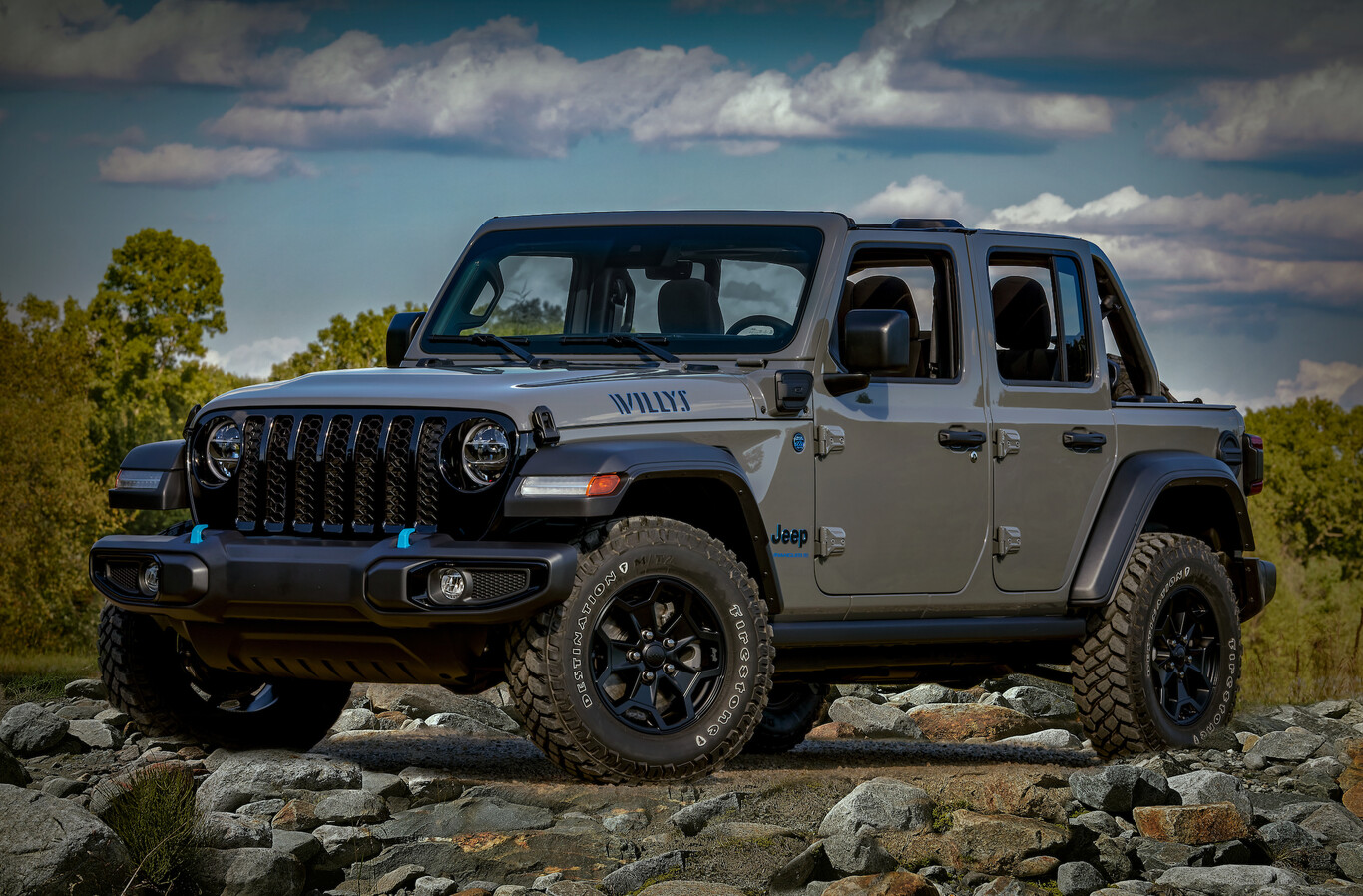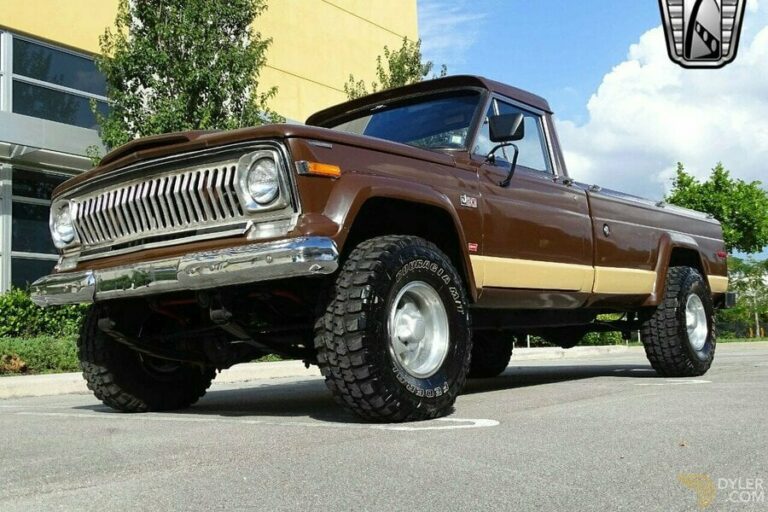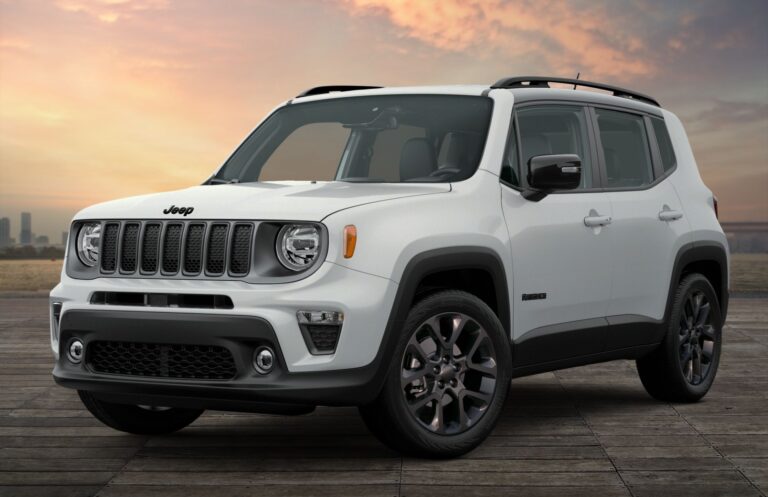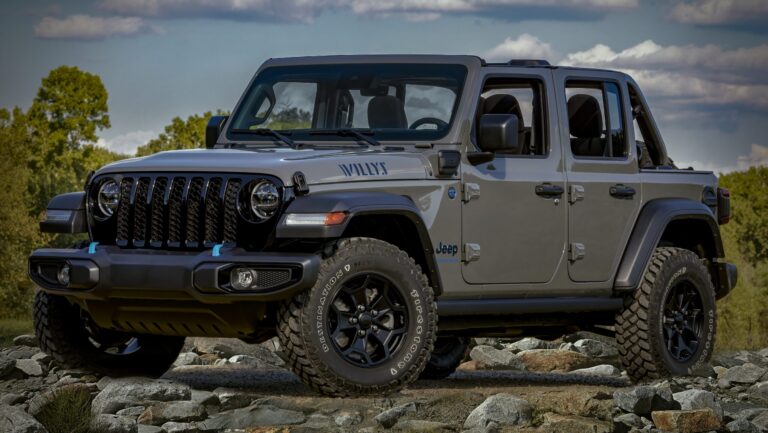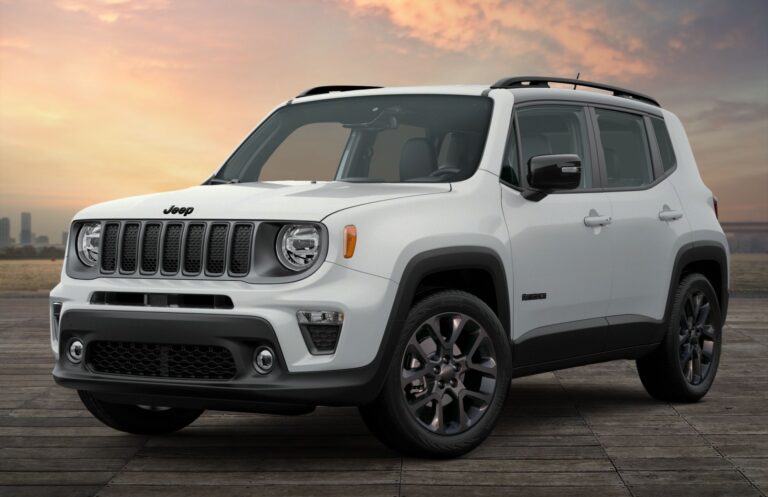Jeep CJ5 & CJ7 For Sale: Your Definitive Guide to Finding, Buying, and Owning a Legend
Jeep CJ5 & CJ7 For Sale: Your Definitive Guide to Finding, Buying, and Owning a Legend /jeeps.truckstrend.com
The rumble of an inline-six, the unmistakable silhouette against a sunset, and the promise of uncharted trails – for many, the allure of a classic Jeep CJ is undeniable. Before the ubiquitous Wrangler, there were the CJ5 and CJ7, rugged, no-nonsense utility vehicles that defined off-road adventure for generations. More than just a mode of transport, owning a CJ is a statement, a lifestyle, and an entry into a passionate community.
If you’ve found yourself searching "Jeep CJ5 CJ7 For Sale," you’re not just looking for a vehicle; you’re looking for a piece of automotive history, a customizable canvas, and a ticket to authentic open-air freedom. This comprehensive guide will navigate you through the exciting journey of finding, evaluating, and ultimately owning one of these iconic machines.
Jeep CJ5 & CJ7 For Sale: Your Definitive Guide to Finding, Buying, and Owning a Legend
The Enduring Legacy: Understanding the CJ5 and CJ7
To truly appreciate what you’re buying, it’s essential to understand the heritage of these two legendary Jeeps. Both are direct descendants of the original Willys MB, the military workhorse of WWII, carrying forward its core principles of simplicity, ruggedness, and unparalleled off-road capability.
The Jeep CJ5 (1955-1983):
The CJ5 boasts the longest production run of any Jeep model. Known for its compact 81-inch wheelbase (later extended to 83.5 inches), the CJ5 is a nimble, agile off-roader, perfectly suited for tight trails and challenging terrain. Its shorter stature often appeals to purists seeking the most direct lineage to the original military Jeeps. Over its nearly three-decade run, it saw various engine options, from the Hurricane F-head to the Dauntless V6, and later AMC’s own inline-six and V8 engines.
The Jeep CJ7 (1976-1986):
Introduced as a more "civilized" evolution of the CJ, the CJ7 featured a longer 93.5-inch wheelbase. This extension provided more interior room, a slightly smoother ride, and the ability to accommodate an automatic transmission and other creature comforts that were less common in the CJ5. It also introduced the optional Quadra-Trac full-time four-wheel-drive system. The CJ7 quickly became a favorite for its balance of classic CJ ruggedness with improved practicality, making it a popular choice for those wanting a bit more versatility for both trail and road.
Both models represent the golden age of utilitarian design, characterized by their solid axles, leaf spring suspension, and easily removable doors and tops – features that remain highly desirable today.

Why a Classic CJ? Benefits and Enduring Appeal
The decision to purchase a vintage Jeep CJ over a modern SUV is often driven by a unique set of desires. Here’s why these classics continue to captivate enthusiasts:
- Unrivaled Off-Road Prowess: At their core, CJs are purpose-built off-road machines. Their short wheelbases (especially the CJ5), excellent approach and departure angles, and robust drivetrain components make them incredibly capable on challenging terrain.
- Simplicity and Maintainability: Unlike modern vehicles laden with complex electronics, CJs are refreshingly simple. This makes them easier and often cheaper to diagnose and repair for the DIY enthusiast. Basic tools and a good manual can go a long way.
- Customization Heaven: The aftermarket support for CJ Jeeps is immense. From suspension lifts, larger tires, and engine swaps to custom interiors and roll cages, you can truly build a CJ that reflects your personal style and intended use.
- Investment Potential: Well-maintained, original, or professionally restored CJs can hold their value remarkably well, and in many cases, appreciate over time. They are often considered collectible vehicles.
- Nostalgia and Community: Owning a CJ is an emotional experience for many, evoking memories of a simpler time or family adventures. It also opens the door to a vibrant, supportive community of fellow CJ owners and off-road enthusiasts.
- Open-Air Freedom: The ability to remove the top and doors offers an unparalleled connection to the environment, making every drive an adventure.
![]()

Sourcing Your Dream CJ: Where to Look
Finding the right Jeep CJ5 or CJ7 requires patience and a good understanding of the market. Here are the most common avenues:
- Online Marketplaces:
- eBay Motors: Great for a wide selection, from parts to fully restored vehicles. Be wary of listings without detailed photos or good descriptions.
- Craigslist/Facebook Marketplace: Excellent for local finds. You can often find project vehicles or daily drivers at competitive prices directly from owners. Always arrange to see the vehicle in person.
- Specialty Forums & Websites (e.g., Pirate4x4, JeepForum, CJ-specific groups): These are goldmines for well-maintained or customized CJs, often sold by knowledgeable enthusiasts.
- Bring a Trailer (BaT), Hemmings, ClassicCars.com: For higher-end, restored, or highly original examples, these auction and listing sites are excellent. Expect premium prices.
- Classic Car Dealers/Brokers: Many dealers specialize in vintage 4x4s. They often offer pre-inspected vehicles, but typically at a higher price point to cover their overhead and profit.
- Auctions (Online & Live): Collector car auctions can offer unique opportunities, but be prepared to bid competitively and understand auction fees.
- Word-of-Mouth & Local Classifieds: Don’t underestimate the power of local connections. Let friends, family, and local mechanics know you’re looking. Check local newspaper classifieds or community bulletin boards.
- Specialty Jeep/4×4 Shops: Some shops that build or restore CJs may also have vehicles for sale or know of clients looking to sell.
The Critical Inspection: What to Look For Before Buying
This is perhaps the most crucial step. A thorough inspection can save you thousands in future repairs. If you’re not mechanically inclined, bring a trusted mechanic or a knowledgeable friend who specializes in vintage 4x4s.
- Rust, Rust, Rust! This is the Achilles’ heel of CJs.
- Frame: Inspect the entire frame for cracks, bends, and especially rust rot, particularly around the spring hangers, body mounts, and transmission crossmember. A rusty frame is a deal-breaker unless you’re planning a full frame-off restoration.
- Body Tub: Check the floorboards (especially under the pedals and seats), rocker panels, wheel wells, and behind the front fenders. Rust in the tub is common but can be repaired or replaced (fiberglass or steel replacement tubs are available).
- Fenders & Grille: Look for bubbling paint or perforations.
- Drivetrain:
- Engine: Check for leaks (oil, coolant), listen for knocking, excessive smoke from the exhaust, and signs of poor maintenance. Ask about rebuild history. Common engines include AMC 258 I6, AMC 304/360 V8.
- Transmission & Transfer Case: Test all gears, listen for grinding, check for leaks. Engage 4WD (high and low range) to ensure the transfer case shifts properly.
- Axles: Look for leaks around the differential covers and axle seals. Check for excessive play in the U-joints.
- Steering & Suspension:
- Check for play in the steering wheel. Look for worn tie rod ends, ball joints, and steering box issues.
- Inspect leaf springs for cracks or sagging. Check shocks for leaks.
- If lifted, assess the quality of the lift kit installation.
- Electrical System: CJs are known for their relatively simple wiring, but past owners’ modifications can lead to nightmares. Check all lights, gauges, and accessories.
- Paperwork: Ensure the title is clear, matches the VIN on the vehicle, and is in the seller’s name. Ask for any service records.
- Modifications: Evaluate the quality of any aftermarket modifications. A poorly installed lift kit or engine swap can be more trouble than it’s worth.
- Test Drive: Listen for unusual noises, feel for vibrations, check brake performance, and assess overall handling. Pay attention to how it shifts and tracks on the road.
Budgeting for Your CJ: Beyond the Purchase Price
The advertised price is just the beginning. Factor in these additional costs:
- Purchase Price:
- Project Vehicle ($2,000 – $8,500): Non-running, significant rust, major mechanical issues. For the serious DIYer.
- Driver Quality ($8,000 – $22,000): Running and drivable, minor cosmetic flaws, some rust, may need basic maintenance/repairs.
- Good Condition ($19,000 – $35,000): Well-maintained, minimal rust, solid mechanicals, presentable exterior/interior.
- Restored/Show Quality ($30,000 – $70,000+): Frame-off restoration, excellent condition, highly desirable, potentially modified to a high standard.
- Restoration/Repair Costs: Unless buying a fully restored model, expect to spend on rust repair, mechanical overhauls, new tires, interior work, and paint. This can easily run into thousands, or even tens of thousands.
- Upgrades: Lift kits, lockers, larger tires, engine swaps, winch, custom bumpers – the list is endless and can quickly add up.
- Maintenance & Consumables: Oil changes, tune-ups, brake pads, fluids.
- Insurance & Registration: Classic car insurance is often affordable, but check with your provider.
- Transportation: If buying out of state, factor in shipping costs.
Common Challenges and Solutions for CJ Ownership
Owning a vintage CJ comes with its quirks. Being prepared can make the experience much more enjoyable.
- Challenge: Rust.
- Solution: Proactive prevention (waxoyl, undercoating), diligent cleaning. For existing rust, learn welding or find a reputable body shop. Consider replacement steel or fiberglass tubs for severe cases.
- Challenge: Aging Components.
- Solution: Many parts are still available new (aftermarket) or used. Proactive replacement of critical wear items (bushings, U-joints, hoses, belts) prevents roadside breakdowns.
- Challenge: "Previous Owner Hacks."
- Solution: Many CJs have been tinkered with. Be prepared to undo shoddy wiring, poorly installed accessories, or questionable modifications. A good wiring diagram is your friend.
- Challenge: Fuel Economy.
- Solution: CJs are not fuel-efficient (typically 10-15 MPG). Accept it, or consider an engine swap (e.g., modern V8 or diesel) if fuel economy is a major concern.
- Challenge: Lack of Modern Safety Features.
- Solution: CJs lack airbags, ABS, and advanced crash protection. Drive defensively. Consider upgrading to a roll cage, three-point seatbelts, and modern headlights for improved safety.
- Challenge: Comfort & Noise.
- Solution: CJs are loud, bouncy, and lack modern creature comforts. Embrace the ruggedness! For some improvement, consider better seats, sound deadening, and a quality soft top or hardtop.
Table: Estimated Jeep CJ5 & CJ7 Price Ranges (USD)
Prices are highly variable based on condition, originality, modifications, location, and market demand. This table provides general estimates.
| Category | Description | CJ5 Price Range (USD) | CJ7 Price Range (USD) |
|---|---|---|---|
| Project Vehicle | Non-running, significant frame/body rust, major mechanical issues, requires full restoration. | $2,000 – $7,000 | $3,000 – $8,500 |
| Driver Quality | Running and drivable, minor cosmetic flaws, some surface rust, may need basic maintenance/repairs. | $8,000 – $18,000 | $9,000 – $22,000 |
| Good Condition | Well-maintained, minimal rust, solid mechanicals, presentable exterior/interior, possibly minor tasteful mods. | $19,000 – $30,000 | $23,000 – $35,000 |
| Restored/Show | Frame-off restoration, excellent condition throughout, all systems functional, highly original or professionally modified. | $30,000 – $60,000+ | $35,000 – $70,000+ |
Note: Specific factors like engine type (e.g., V8 vs. I6), transmission (manual vs. auto), rare options, and historical significance can push prices beyond these ranges.
Frequently Asked Questions (FAQ) About Buying a Jeep CJ5 or CJ7
Q1: What’s the main difference between a CJ5 and a CJ7?
A1: The primary difference is the wheelbase. The CJ5 has a shorter 81-inch (or 83.5-inch) wheelbase, making it more nimble off-road. The CJ7 has a longer 93.5-inch wheelbase, offering more interior space, a slightly smoother ride, and the ability to accommodate an automatic transmission more easily.
Q2: Which engine is best for a CJ?
A2: The most common and reliable stock engine is the AMC 258 cubic inch (4.2L) inline-six, known for its torque. V8 options like the AMC 304 or 360 offer more power. Many owners also perform engine swaps (e.g., Chevy 350, Ford 302, or modern LS engines) for increased power and reliability, though this adds complexity and cost.
Q3: Are CJs safe to drive on modern roads?
A3: Compared to modern vehicles, CJs lack advanced safety features like airbags, ABS, stability control, and crumple zones. Their high center of gravity and leaf spring suspension can make them feel tippy. Drive defensively, ensure brakes and steering are in excellent condition, and consider adding a roll bar/cage and modern seatbelts.
Q4: How hard is it to find parts for CJs?
A4: Surprisingly easy! Thanks to a massive and dedicated aftermarket industry, most mechanical and body parts are readily available new. Used parts can also be found through salvage yards and online forums.
Q5: Can a CJ be a daily driver?
A5: It’s possible, but challenging. CJs are not comfortable, fuel-efficient, or quiet by modern standards. They require more frequent maintenance and attention. Many owners prefer to use them as weekend toys or dedicated off-road vehicles.
Q6: What’s the typical fuel economy for a CJ?
A6: Expect poor fuel economy, generally in the range of 10-15 miles per gallon, depending on the engine, gearing, tire size, and driving style.
Q7: Should I buy a fully restored CJ or a project vehicle?
A7: This depends on your budget, mechanical skill level, and available time. A fully restored CJ is a turn-key solution but comes at a premium. A project vehicle is cheaper upfront but will likely cost significantly more in parts and labor than the purchase price, and demand a lot of your time. If you enjoy wrenching and learning, a project can be incredibly rewarding.
Conclusion: Your Adventure Awaits
Searching "Jeep CJ5 CJ7 For Sale" is the first step on an exciting journey. These vehicles are more than just metal and rubber; they are a gateway to adventure, a symbol of freedom, and a tangible link to a rich automotive heritage. While buying a classic CJ comes with its challenges – particularly the ever-present threat of rust and the need for diligent maintenance – the rewards far outweigh the hurdles.
With thorough research, a careful inspection, and a realistic budget, you can find a CJ that perfectly matches your aspirations. Whether you dream of conquering the toughest trails, cruising coastal roads with the top down, or simply owning a piece of American history, a Jeep CJ5 or CJ7 offers an unparalleled, authentic experience. Embrace the journey, and prepare to join the ranks of proud CJ owners who understand that true freedom often comes with a little dirt and a lot of character. Your legendary adventure starts now.
